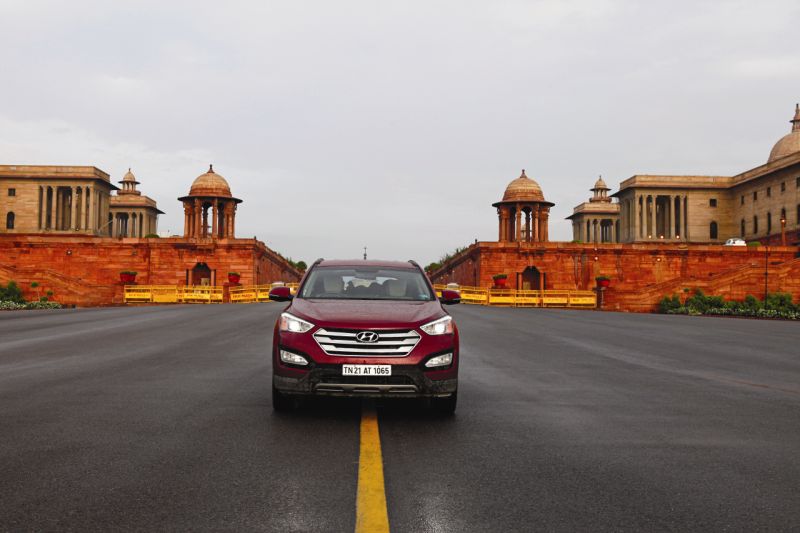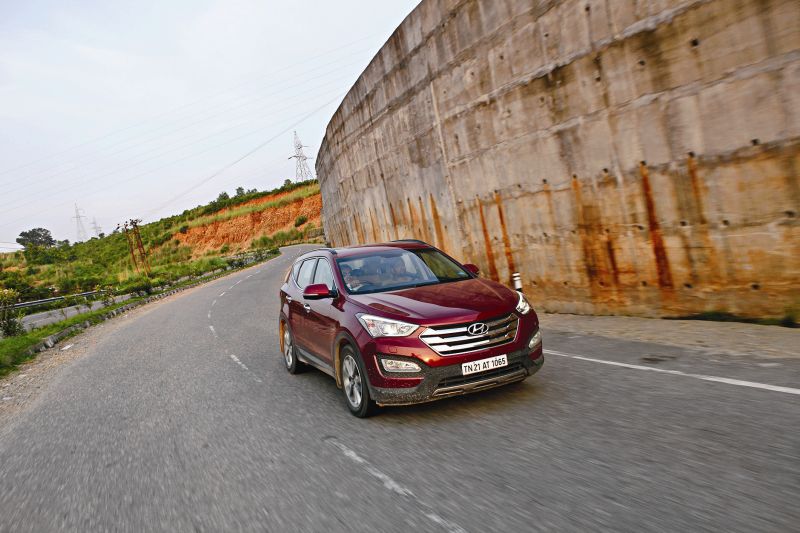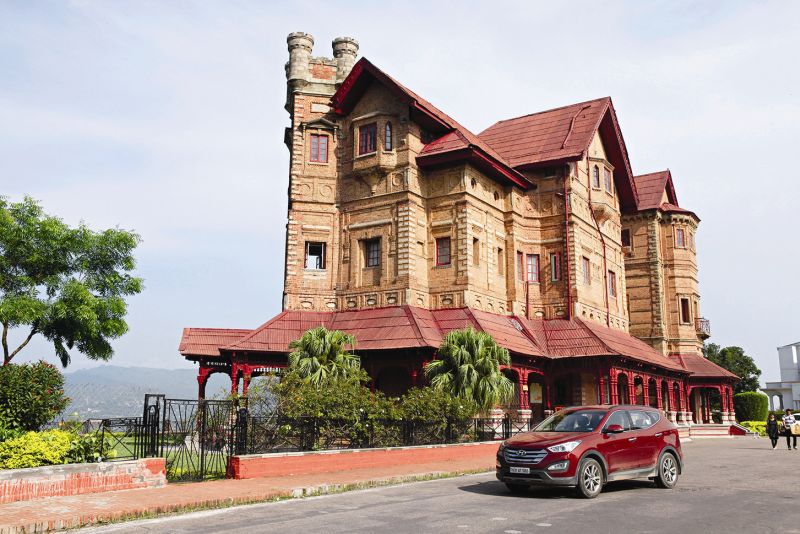On our arrival in Jammu, we stopped at the Mahamaya temple on the outskirts of the city first. No surprises there, considering Jammu is also known as ‘the city of temples’. The approach path leading to the Mahamaya temple is worth a visit in itself. A tiny little stretch of tarmac that was scarcely wide enough for the Santa Fe, and was flanked on either side by troop upon troop of monkeys! Remembering the love that primates seemed to have for the Santa Fe in the Periyar National Park at Thekkedy on the very first leg of this journey, I was extra cautious when navigating this bit. Local folklore talks of a freedom-fighter called Mahamaya, a member of the Dogra clan, in whose honour this temple was supposedly first erected. The story goes that this firebrand sacrificed her life back in the seventh century in an effort to protect Jammu from foreign infiltrators, and her valour and sacrifice was such that the locals immortalised her memory by elevating her to the stature of goddess. It’s fitting then that the temple sits atop a hill which offers a breathtaking panoramic view of the very Jammu valley that Mahamaya martyred herself to save if you do believe the legend. I for one would like to think it was true, the world could always use another hero to draw inspiration from.
We followed up the temple with the Bahu Fort, which, I may add, also doubles up as a temple. This one is dedicated to who I am told is the patron goddess of the land – Kali, or ‘Bave Wali Mata’ as the locals say. The fort has stood firm for over 3,000 years now, with the temple a relatively new addition, having been built in 1822. The fortification is also surrounded by lush gardens that are well-maintained, and well visited too judging by the crowd there. The Bagh-e-Bahu also plays host to India’s biggest underground aquarium, which has been built across a network of over 20 caves, the entrance to which is shaped like a massive fish, and, you guessed it, you do have to walk through its wide open mouth to enter the aquarium.
Another temple that is close to the hearts of the Jammu residents is Raghunath Temple. Construction of this temple commenced in 1835, and is dedicated not to a single deity, but instead holds seven different sections for seven prominent gods from the epic Ramayana. The Raghunath Temple does have a sad recent history, though, because in 2002, the temple was twice the target of terrorists, suicide bombers who caused the deaths of 20 people and numerous injuries combined.
Last on our Jammu agenda was the Amar Mahal. This palace was commissioned by Dogra King Raja Amar Singh in the 19th century and today it has been converted into a museum. If the architecture seems more reminiscent of a château in the south of France than a north Indian palace, that’s because King Amar hired a French architect to build his palace, so it was inspired by le châteaux rather than the more traditional ‘mahal’s you’re more likely to come across in India. Step inside, and you can find the fruits of the labour of Indian maestros such as M F Hussain, J Swaminathan, G R Santosh, Bikash Battacharjee and others adorning the palace walls, along with a very intriguing series of 47 paintings created in the Kangra Ki Kalam style of art. These miniature paintings, when followed chronologically, depict the love story of Nala and Damayanti unfolding from within the canvas. Since everyone in the Car India crew – from the pious to the connoisseur, had been satiated through the variety of fare available in Jammu, we left the winter capital of J&K, and I turned the Santa Fe towards Srinagar.
























Leave a Reply